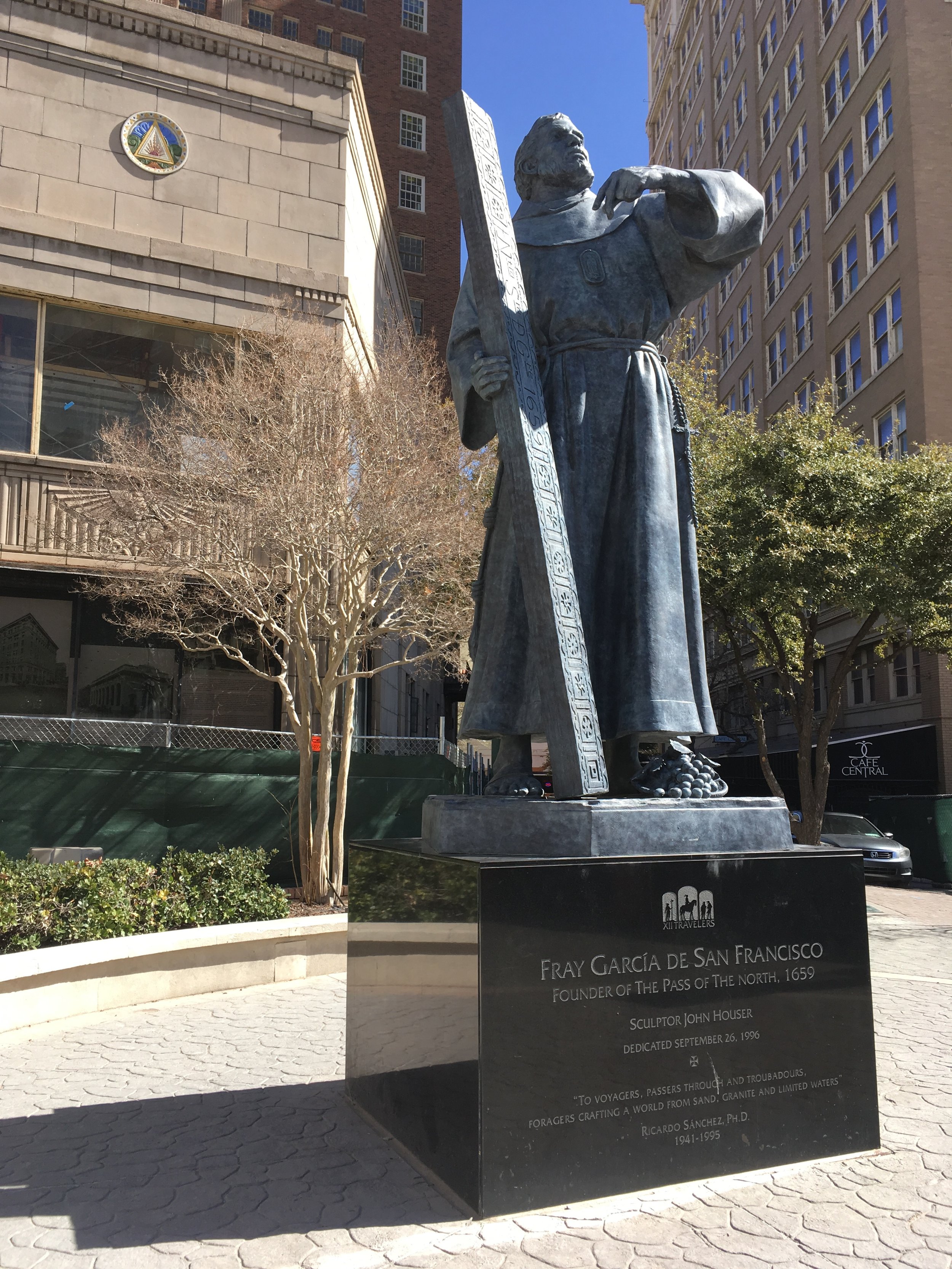After a cup of coffee and some time browsing the newspaper, I spent yesterday morning exploring the city of El Paso.
The journey began with a drive from my motel along Texas State Highway Loop 375, a length of freeway that traces the city’s curving boundary of steel fencing, concrete river channel, and—mostly obscured beyond that—Ciudad Juárez, Mexico.
I parked at Chamizal National Memorial, a smallish park at El Paso’s southern edge that overlooks that fencing as well as the Puente Internacional Córdova De Las Americas, one of the city’s three bridges serving as official ports of entry to and from Mexico. At a glance, the bridge that arches over TX-375 and the Rio Grande looks like any other freeway ramp. Look closer and you’ll notice the tollbooth-style structures processing vehicles and passengers at its base. At the top of the bridge’s shallow parabola, U.S. and Mexican flags fly tall, framing the point where drivers and pedestrians cross from one nation to the next. Seen from the park, the port looked orderly and ordinary. I can’t believe I forgot to pack my passport—I bet I could’ve crossed over and back before lunch.
From the park, I drove a couple miles further west to El Paso’s downtown. I kept turning along back roads to get a feel for the rather rundown neighborhood closest to the border fence, and at one point briefly panicked when I almost turned onto the Puente Internacional Paso Del Norte by mistake. I’m sure if I did drive up to that port of entry without my passport, the officials there would just roll their eyes and direct me how to turn around on the U.S. side of the bridge before I hit Mexico. Still, I’d rather save everyone the trouble of dealing with me as an undocumented migrant attempting to cross the border.
When I made it downtown I parked on a side street and spent an hour walking among gleaming government buildings, office high rises, landscaped plazas, and the arts district. The day was bright, windy, and quiet—perfect for taking in the sights of what I found to be a beautiful city center. The handful of times I did cross paths with a fellow pedestrian, we each smiled in greeting—I said “good morning,” they said “buenos días.”
A few transcriptions to caption the photos I took:
Mayor Dee Margo’s letter in the “Visit El Paso” official visitors guide that I picked up in the motel lobby: “I would like to welcome you to El Paso—the Sun City. We are the 19th largest city in the United States, the sixth largest city in Texas and the largest city on the US-Mexico border—we are three states, two countries and one region of 2.7 million people. I sincerely hope you enjoy the rich culture that makes our border town a unique staple in our nation. Amongst many recognitions, we are proud to say El Paso has the lowest crime rate in the US for cities with populations over 500,000 for the fifth year in a row.”
Inscription beneath a downtown sculpture of Fray García de San Francisco, Founder of the Pass of the North, 1659: “TO VOYAGERS, PASSERS THROUGH AND TROUBADORS, FORAGERS CRAFTING A WORLD FROM SAND, GRANITE AND LIMITED WATERS”
Description painted on a mural in the El Paso Arts District: “This mural depicts five endangered species found in the US/Mexico borderlands: the Chiricahua Leopard Frog, Ocelot, Mexican Gray World, Northern Aplomado Falcon, and Steed’s Pincushion cactus. These species deserve freedom of movement and our protection.”









